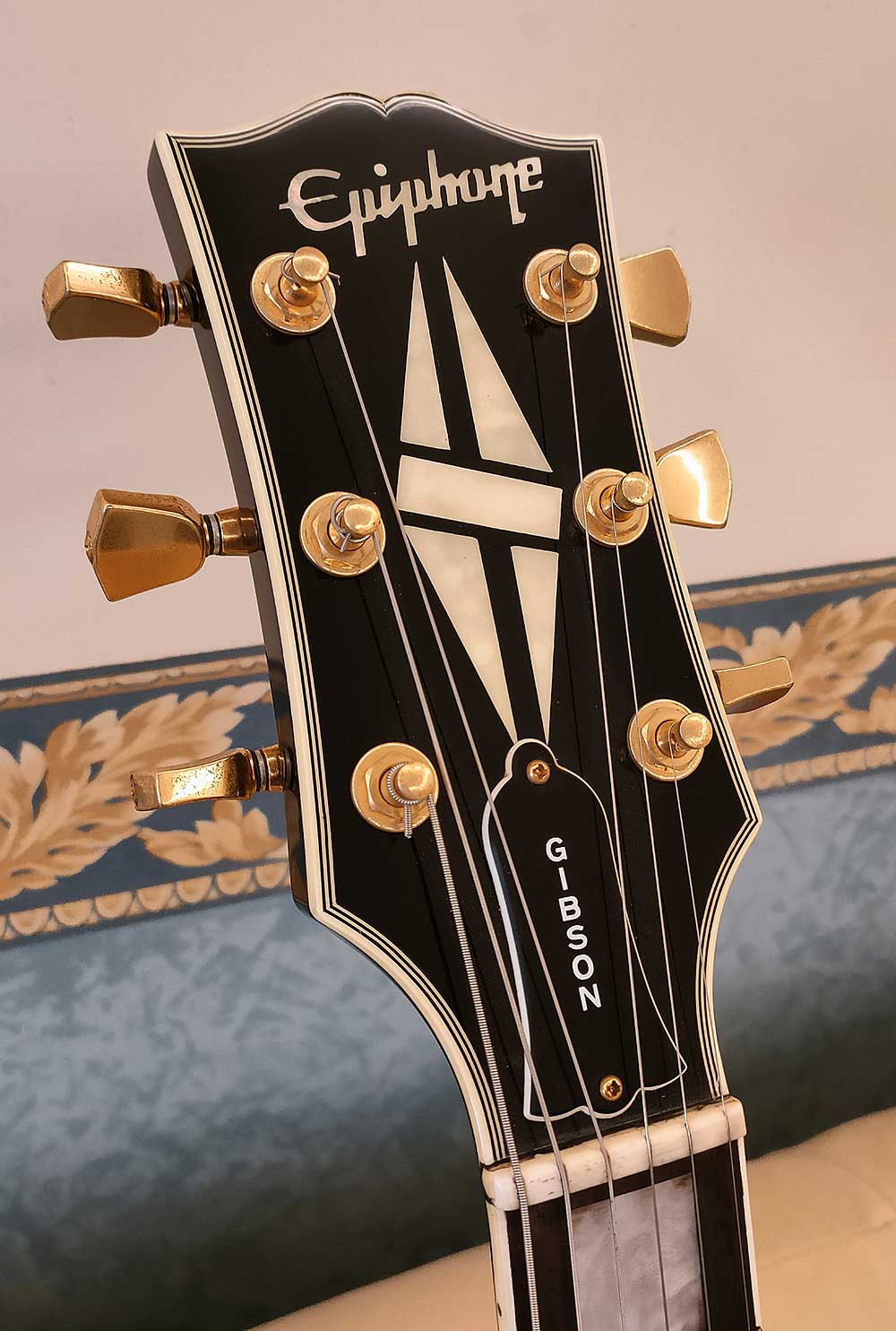”Let's start the year with a flourish with this gorgeous black pearl that comes from the Rising Sun: a rare Epiphone LPC-90, the Japanese Gibson Les Paul Custom.
Lorenzo
Gibson began the production of instruments in Japan in 1969, when it moved the production site of Epiphone, which was entrusted to the Matsumoku Industrial Co. factory (then it was still called Matsumoto Mokkou, from which the compound name Matsumoku derives), located in the city of Matsumoto.
Matsumoku was initially a manufacturer of wooden furniture for Singer sewing machines and later converted to the manufacture of electric guitars in 1962 thanks to a commercial agreement with Yuichiro Yokouchi, former founder of Fujigen, also based in Matsumoto.
When Gibson arrived at Matsumoku, it was already famous as a manufacturer of instruments for brands such as Aria, Westone, Ibanez, Greco and in its history as a manufacturer of quality guitars it produced for over thirty different brands, until closing in 1987, the following year. at the end of its relationship with Gibson.
It can therefore be imagined that the loss of such a big customer has had a significant negative impact on the already expensive investment that the factory had made to renovate its plants in 1986: air of sabotage? Who knows…
However, Gibson decided to entrust the management of its new brand “Orville by Gibson” to Yamano Gakki, who had already led the production of Fender Japan together with Kanda Shokai.
The brand, derived from the name of the founder of Gibson itself, was created to stem the commercial loss caused by the high sales numbers of high quality and competitive prices of the Japanese copies, both in the domestic market and in export. Consequently, producing a Gibson line at lower cost directly in the country of sale and reserved exclusively for the domestic market seemed the best solution.
Production of the ObGs started in 1988, instruments of high manufacturing and quality of materials, nitro finished and equipped with Gibson pick-ups, and in 1989 also began the production of the “Orville”, a cheaper line finished in polyurethane and with Japanese production pick-ups. While the Orville instruments were marketed between ¥ 70,000 and ¥ 80,000, the Orville by Gibson instruments were sold for between ¥ 100,000 and ¥ 200,000.
The production of these instruments was remarkably successful but nevertheless came to a halt and, while the ObGs were discontinued in 1995, the Orville stopped in 1997 to make room for the Epiphone Japan, which was produced in two diversified series: the Elitist with Gibson pick-ups, produced mainly for foreign countries, and the Elite JDM (Japan Domestic Market).
Of the latter, not much is known apart from the fact that they were produced by both Fujigen and Terada, always exclusively for the domestic market and always with a polyurethane finish and the same pick-ups as the Orville. Although they were in production until 2002, they are quite rare instruments and are even more interesting as they are among the very few existing ones under the Epiphone brand but with the typical Gibson-shaped headstock.
In the JDM line, Les Paul models were produced in the Junior SC and Dc, Special, Standard and Custom versions along with SG models, 335 models and Thunderbird and EB basses.
The Customs were in 3 versions, LPC-80 (rosewood), LPC-90 (ebony) and LPC-95L (left-handed), today at Classic2vintage we are pleased to welcome a splendid LPC-90, or the version with ebony fretboard.
It’s a Fujigen and the year of production is 1999, it’s owned by our friend Mark R. and came to him from Osaka on a 4-month odyssey journey at sea due to the courier blockade which made air shipping impossible. But in the end, she miraculously arrived safe and sound, just when he believed she had been shipwrecked on some distant island.
This beautiful black pearl is in excellent condition and completely original except for an upgrade of the pots and bridge pickup with a Seymour Duncan SH-4 JB and will continue to rock in Mark’s hands for a long time to come.



















